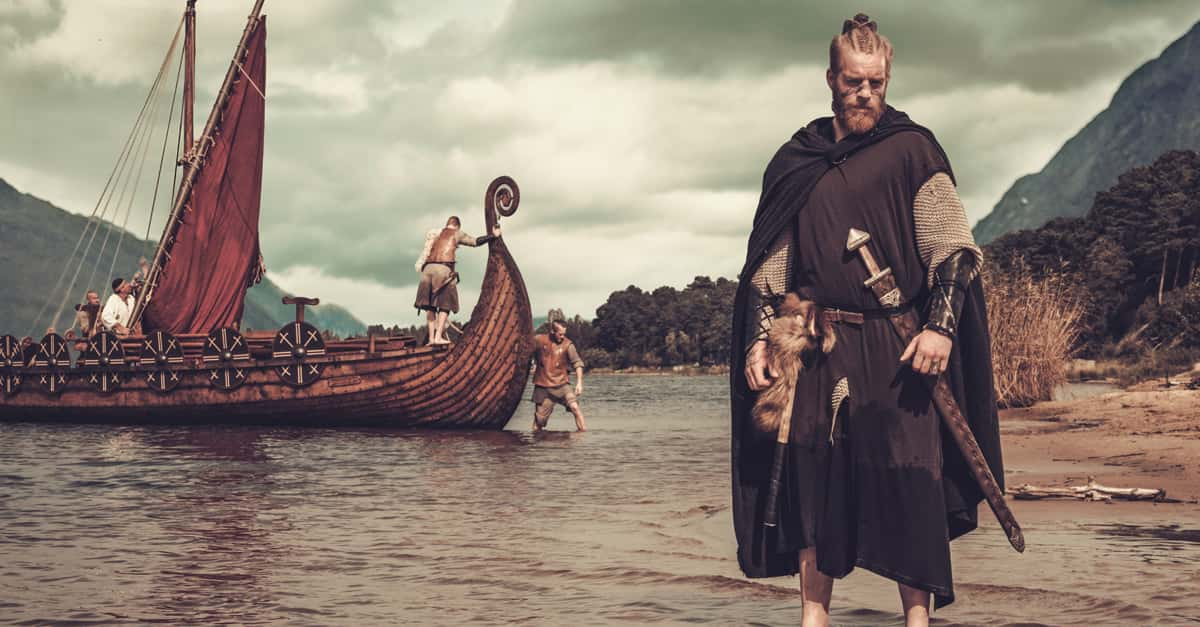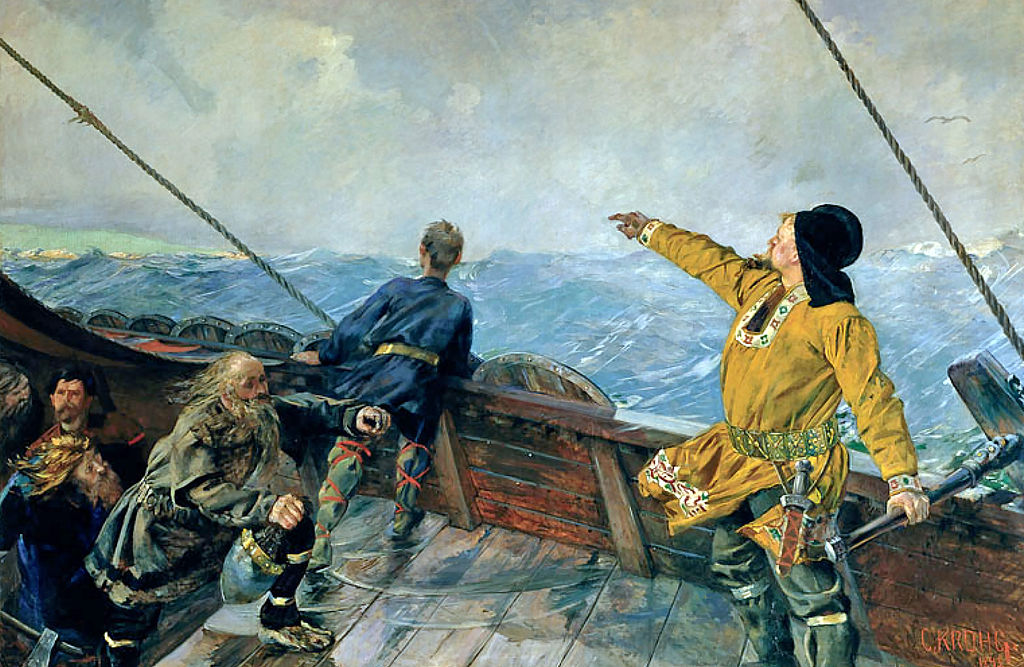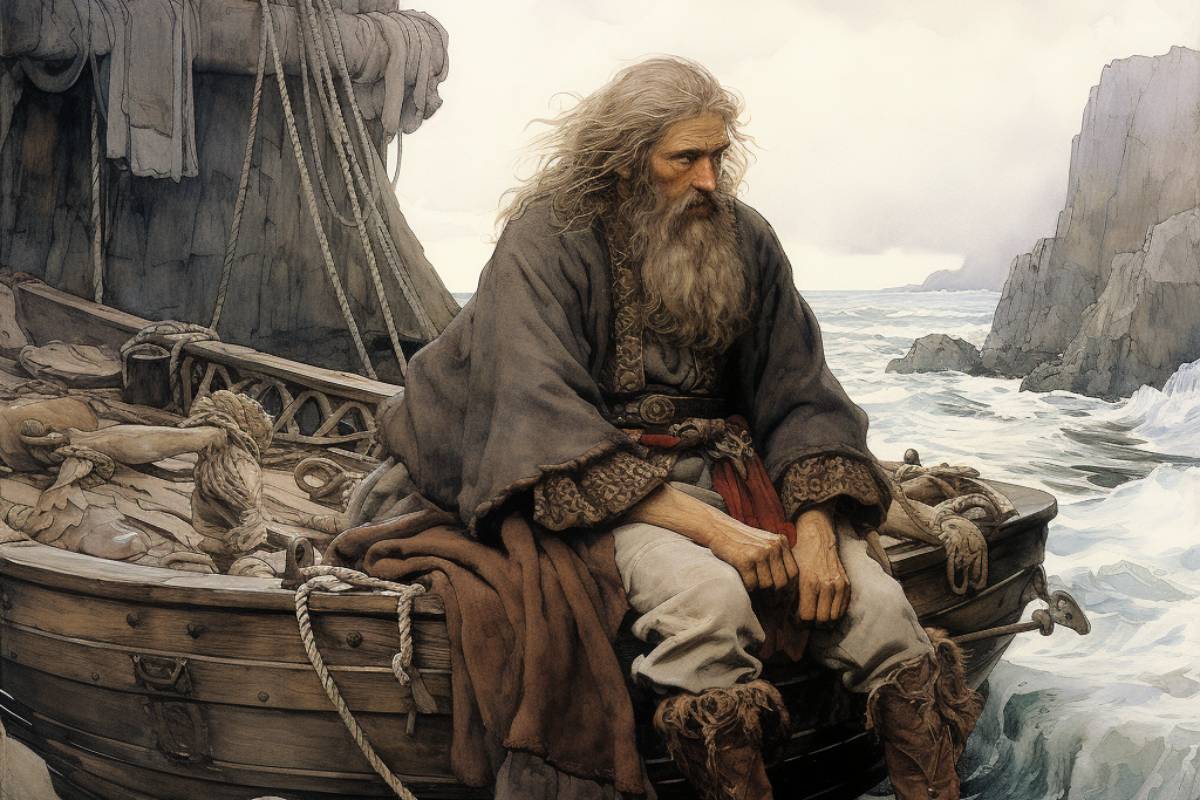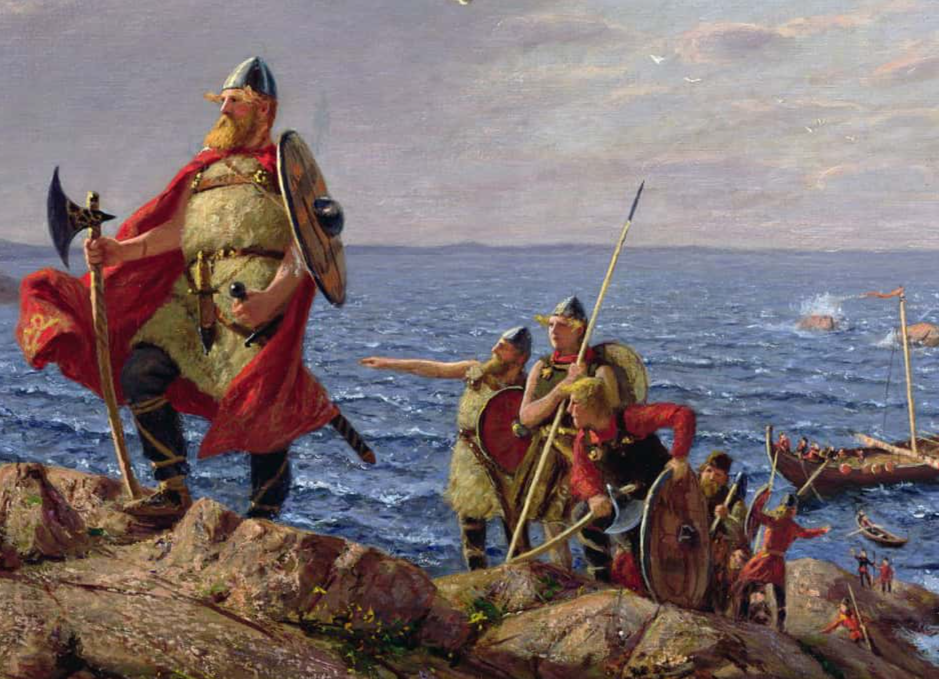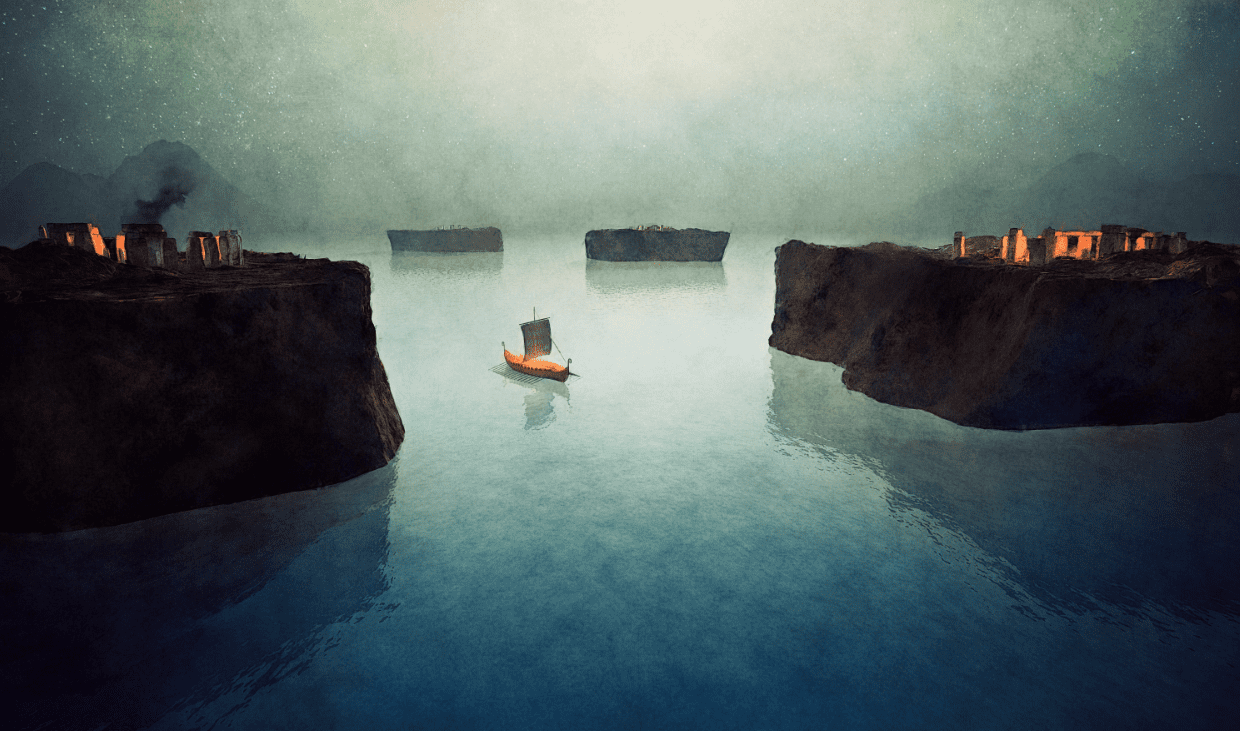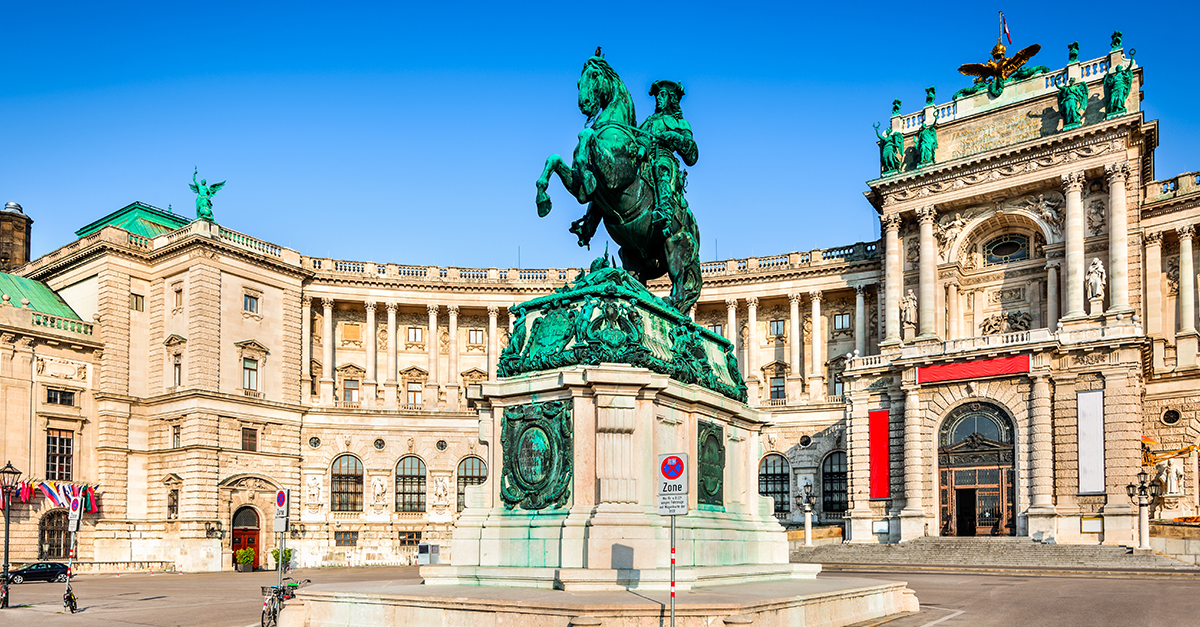Forget About Columbus
If there were an award for biggest glory hog in human history, Christopher Columbus would have to be a prime candidate. Putting aside the many instances of horrific behavior on his part, Columbus' most enduring legacy is also just utter bologna. He was not the first European in North America.
Was he close? Depends on your timescale. He only missed the mark by about 500 years.
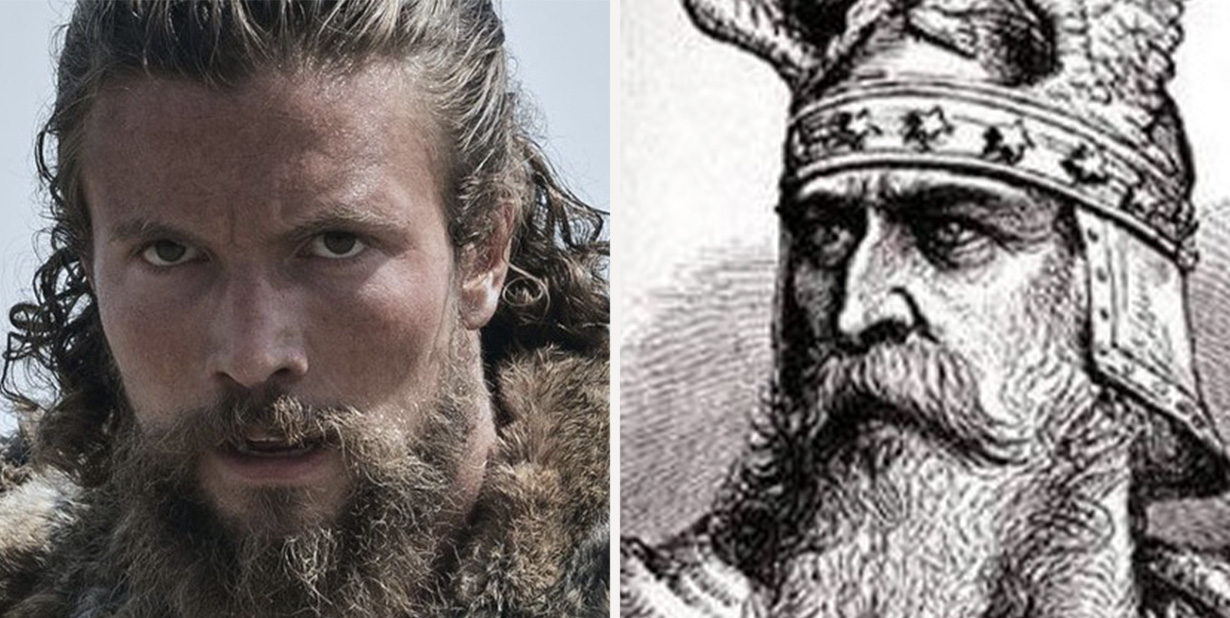
Bjarni Herjólfsson
Bjarni Herjólfsson made a pilgrimage every summer to his family home. He was a merchant captain in Norway. His parents were farmers in Iceland. It was a nice tradition. The catch? Bjarni lived in the late 10th century. Air-service on the Norway-to-Iceland route was spotty.
To make his yearly voyage, Bjarni was forced to navigate the treacherous route across the freezing Norwegian Sea.
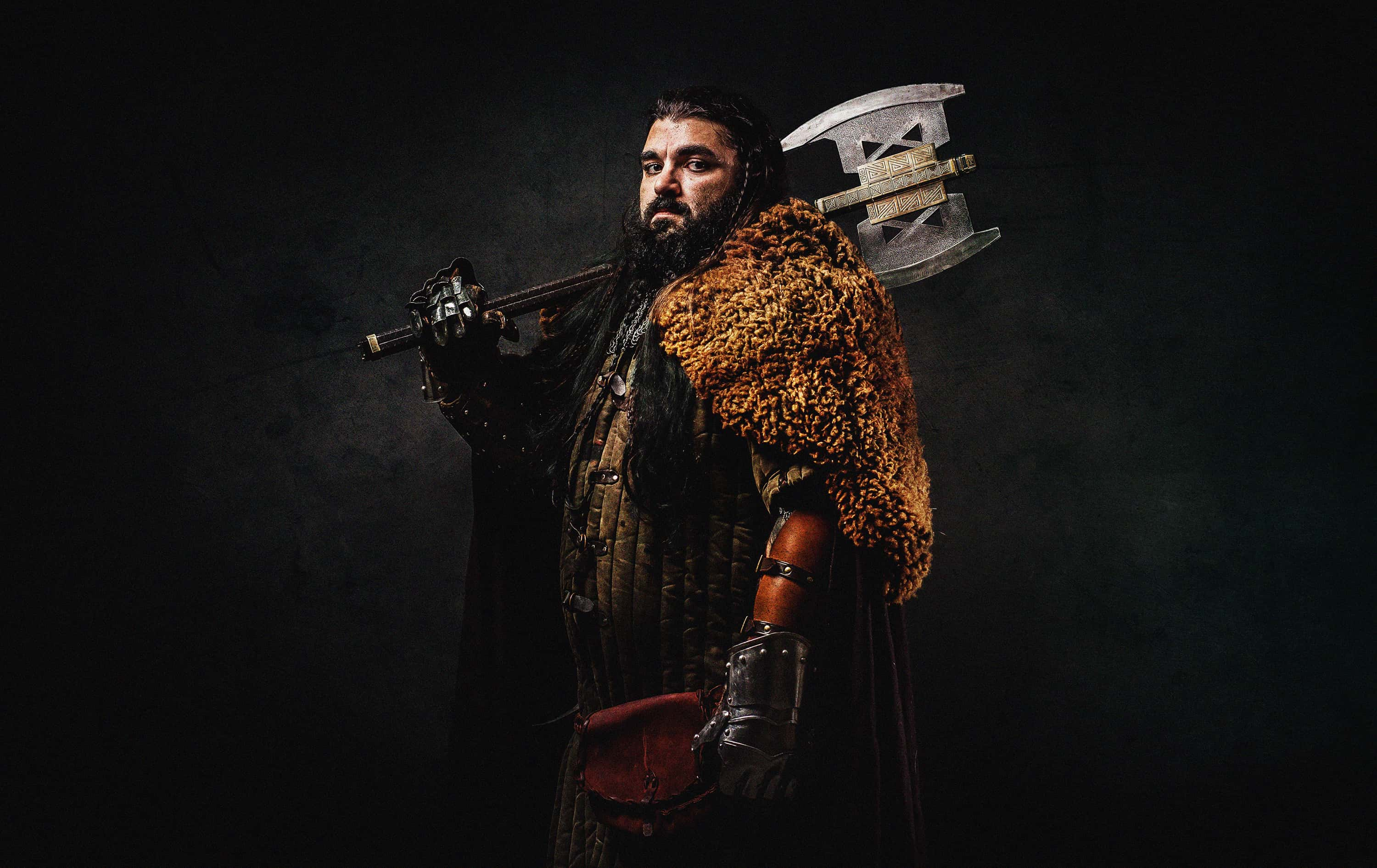 Getty Images
Getty Images
No Problemo
Bjarni, though, was an adept sailor, and for most of his adult life, the trip went off without a hitch. But in 986 AD, some unknown breakdown in communication led to a scheduling snafu.
Bjarni showed up in Iceland that summer, only to hear that his parents had immigrated to Greenland over the winter. Without so much as a postcard.
That's rough.
Braving The Unknown
Not one to be easily deterred (or maybe immune to social cues) Bjarni collected a crew and resolved to follow them. Neither he nor any member of his crew had ever made the trip to Greenland. Bjarni, apparently, saw this as irrelevant.
The result was the first ever European trip to North America.
Blown Away
Shortly into their voyage, the Bjarni expedition took the full brunt of a North Atlantic storm. They were blown wildly off course. For three days, they grappled with high-seas, wind, rain, and the torment of an angry ocean.
On the fourth, the sun shone through.
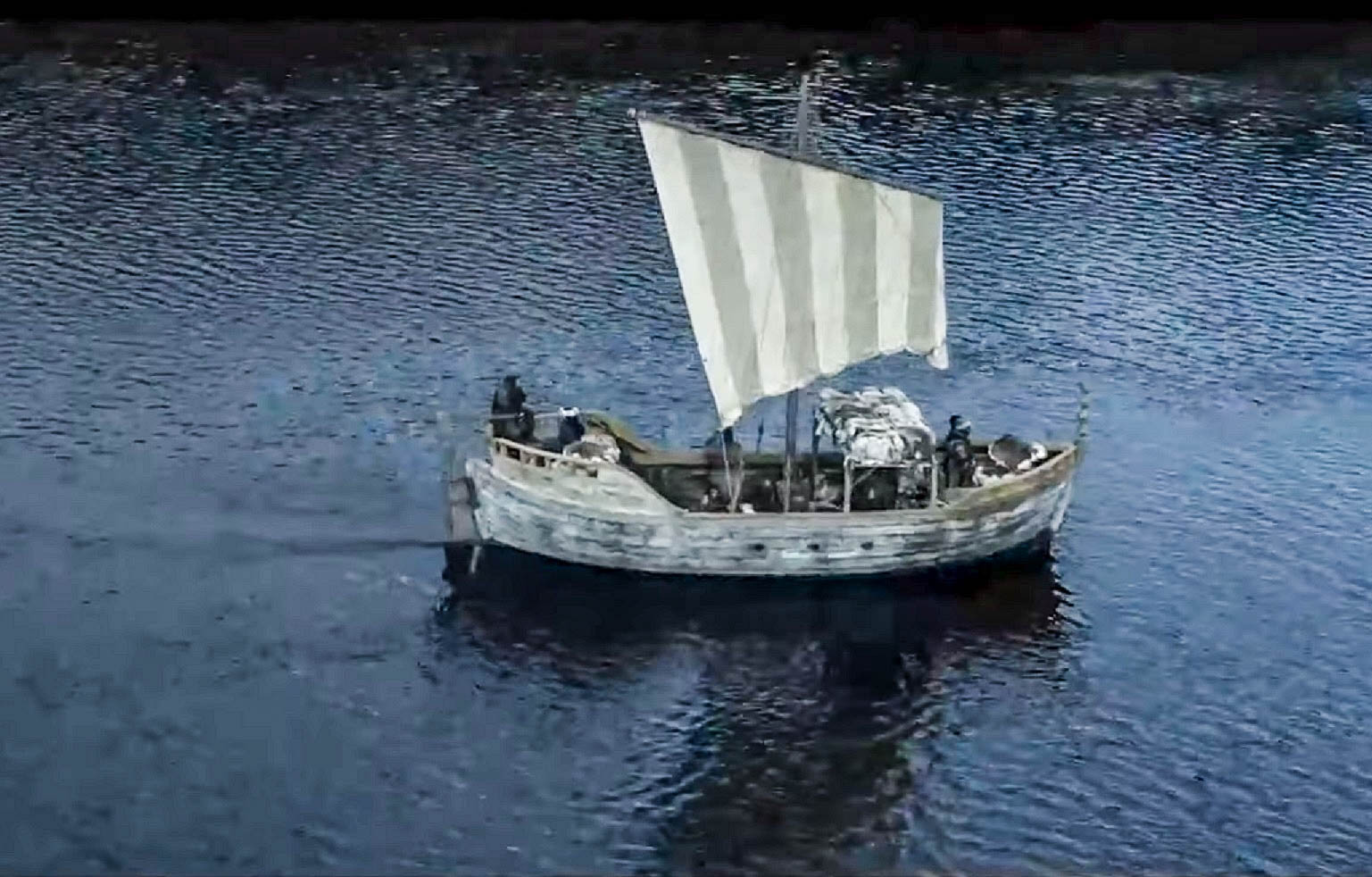 Vikings: Valhalla (series), MGM Television
Vikings: Valhalla (series), MGM Television
It's Too Green!
Bjarni and his men collected their wits and reoriented themselves, only to spot a mysterious wooded land drifting on the horizon. It didn't match the description they'd been given of Greenland. Where there should have been ice and rock there were rolling hills of forest and grass.
Deterred, they chose not to go ashore.
Rumors Spread
Bjarni and his band of lost souls eventually made it back to Greenland. Once there, there was little immediate interest in their misadventure. The Vikings were a famously hardy people, with little time for weakness or failure.
Eventually, though, Bjarni traveled to Norway, where the rumors of his sighting on the far side of the world roused a significant degree of interest.
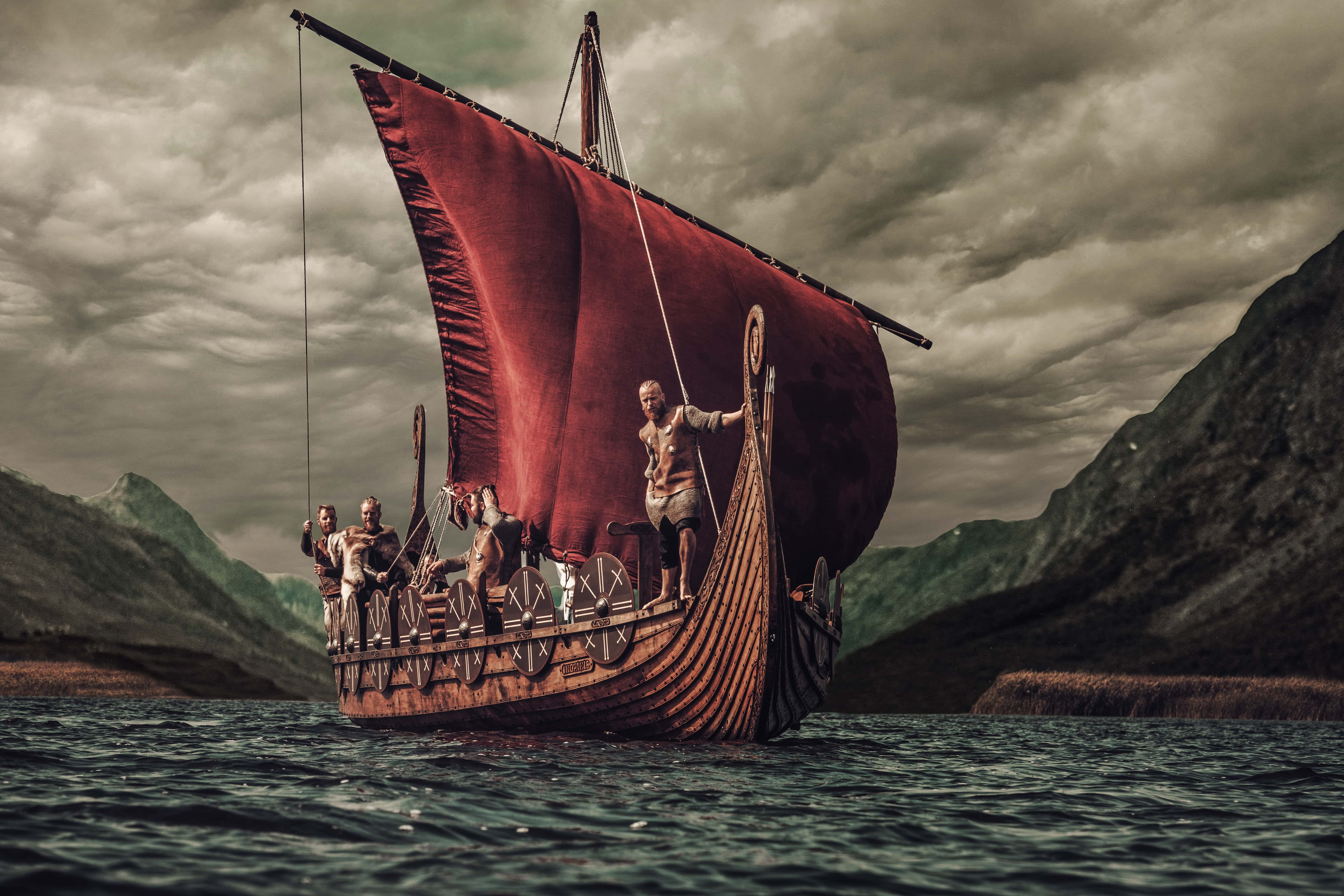 Getty Images
Getty Images
First?
Leif Erikson is often credited with being the first European to step foot in America, but Bjarni was probably the first to lay eyes on this land.
In the words of Professor TJ Oleson (University of Manitoba), "There are strong arguments for the view that the three lands seen by Bjarni were Newfoundland, Labrador, and Baffin Island."
He Was Inspiring
Bjarni’s venture may have been a failure, but his influence was only beginning to spread.
After returning home, stories of Bjarni’s accidental discovery spread like wildfire among the seafaring people of Norway. Among those enthralled listeners? None other than the legendary Norse explorer, Leif Erikson.
Leif Erikson
Leif had himself experienced a similar accidental discovery on a previous voyage from Norway to Greenland, during which he’d been blown off course and encountered two shipwrecked sailors who claimed to have visited a land of "self-sown wheat fields and grapevines" beyond Greenland. Their description matched Bjarni’s stories.
Excited by the possibilities, Leif launched his own expedition. He even bought the original ship Bjarni had used for this voyage. Together with a crew of 35 men, he set off for new horizons.
In His Footsteps
Following Bjarni’s route to the best of his ability, Leif and his men first landed on a rocky outcrop near Greenland (today thought to be Baffin Island). Pushing on, though, they eventually founded a settlement they called Leifsbúðir (meaning Leif’s Booths) in an area they came to call Vinland, after the grapes they found growing in abundance there.
If the Norse legends are true, it was the first permanent European settlement in the New World.
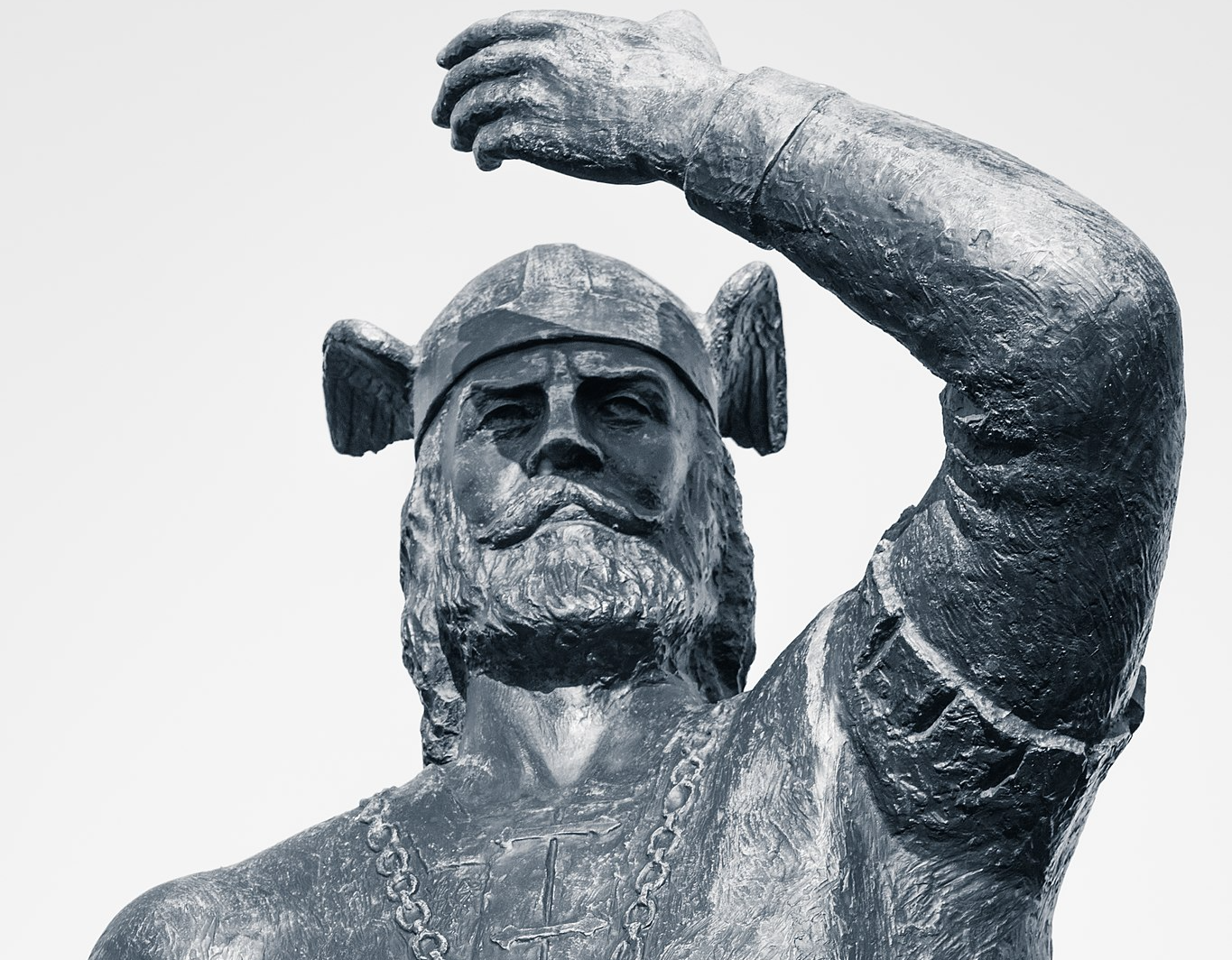 Sharon Mollerus, Wikimedia Commons
Sharon Mollerus, Wikimedia Commons
L'Anse aux Meadows
The story of Bjarni and Leif’s discoveries were recorded in writing by two early Norse histories: The Saga of Erik the Red and The Saga of the Greenlanders. Both were written around the year 1200, and tell mildly differing stories off their experiences.
For years, the veracity of the Sagas was cast in doubt. Perhaps unsurprisingly, many historians were careful not to trust accounts that had been written primarily as popular entertainment.
L'Anse aux Meadows changed all that.
The Norse Legacy In North America
In 1960, two Norwegian archaeologists discovered the remains of a Norse settlement in Newfoundland, Canada, at the northernmost tip of the island. The village where they made their discovery is called L'Anse aux Meadows.
To this day, the site at L'Anse aux Meadows remains the only confirmed Norse settlement ever discovered in North America. It stands as definitive evidence of pre-Columbian Transatlantic European exploration.
At the very least, L'Anse aux Meadows proves that the Norse explorers made it to North America. Many experts propose that the site may be the location of Leif Erikson’s settlement.
 Getty Images L'Anse aux Meadows from the air
Getty Images L'Anse aux Meadows from the air

